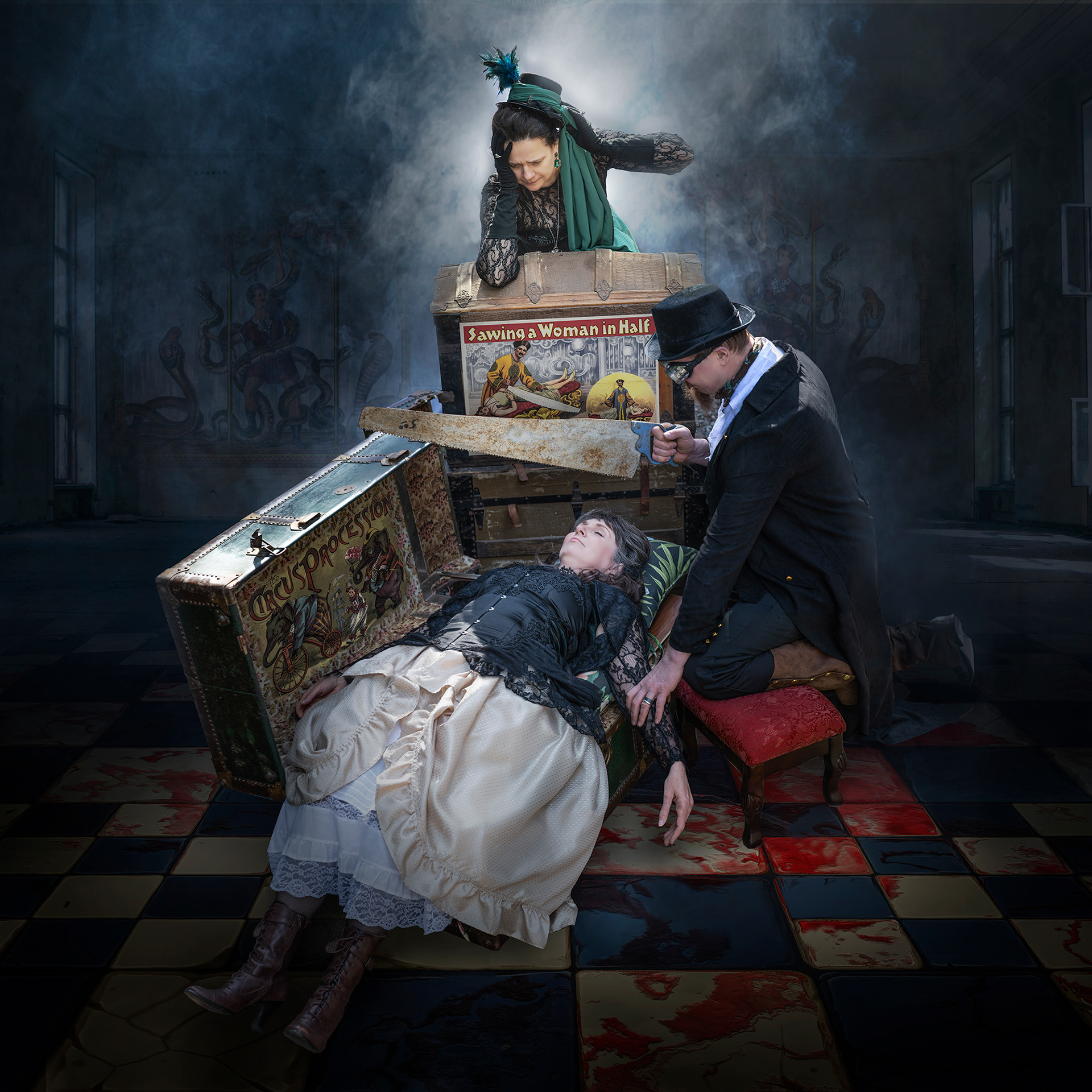Guilty! I really do love Steampunk. What I love most is it's atmosphere of conflicting extremes, old and new, conscious and mechanical, man and machine. There is something about the steampunk culture that will always be timeless. It ties nicely with my love of science-fiction, fantasy, vintage clothing, illustration and photography. I enjoy capturing timelessness in my work, and in such an alternative reality, I can play with the myriad of ways to bring that reality to life in a time and place of its very own.
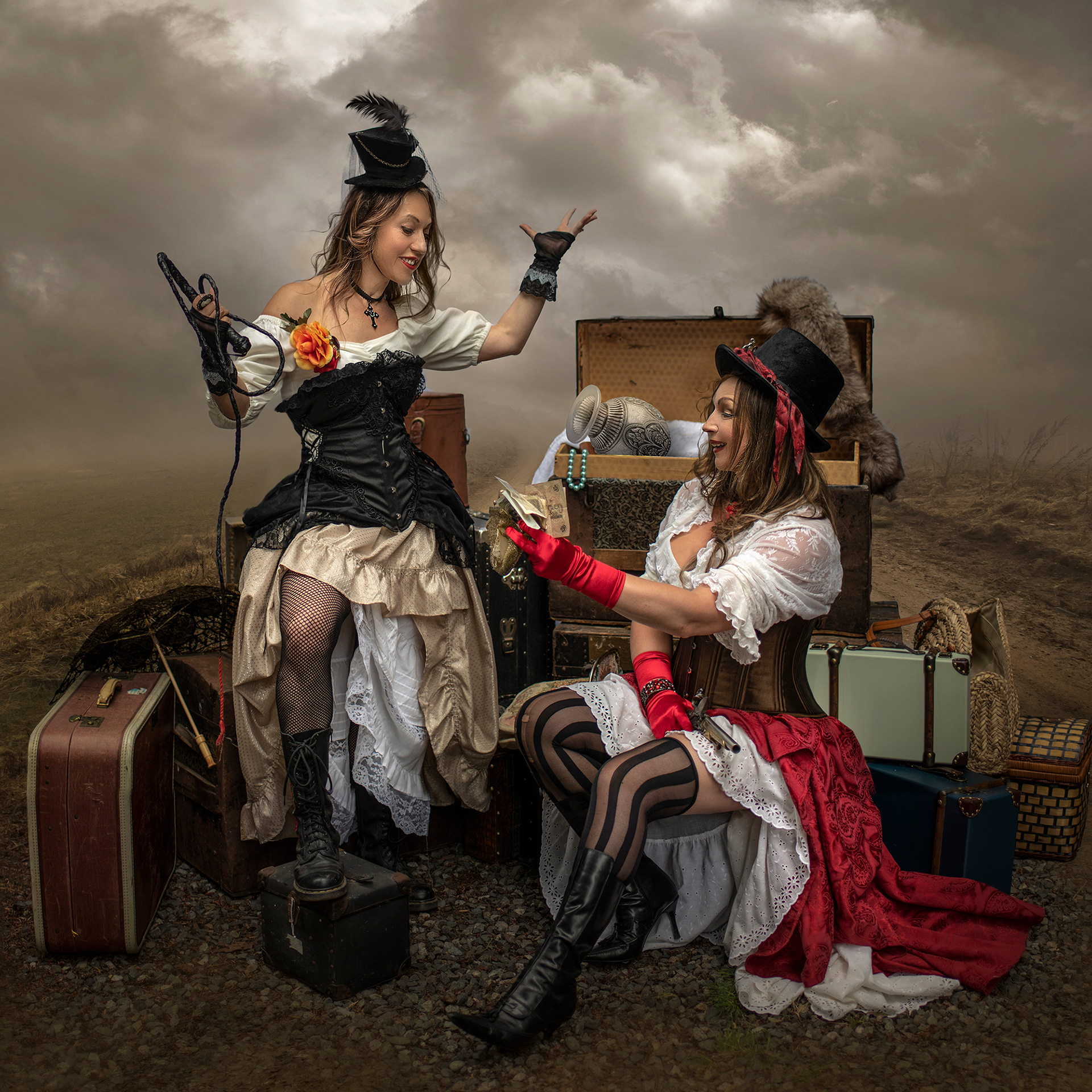
Girls Day Out
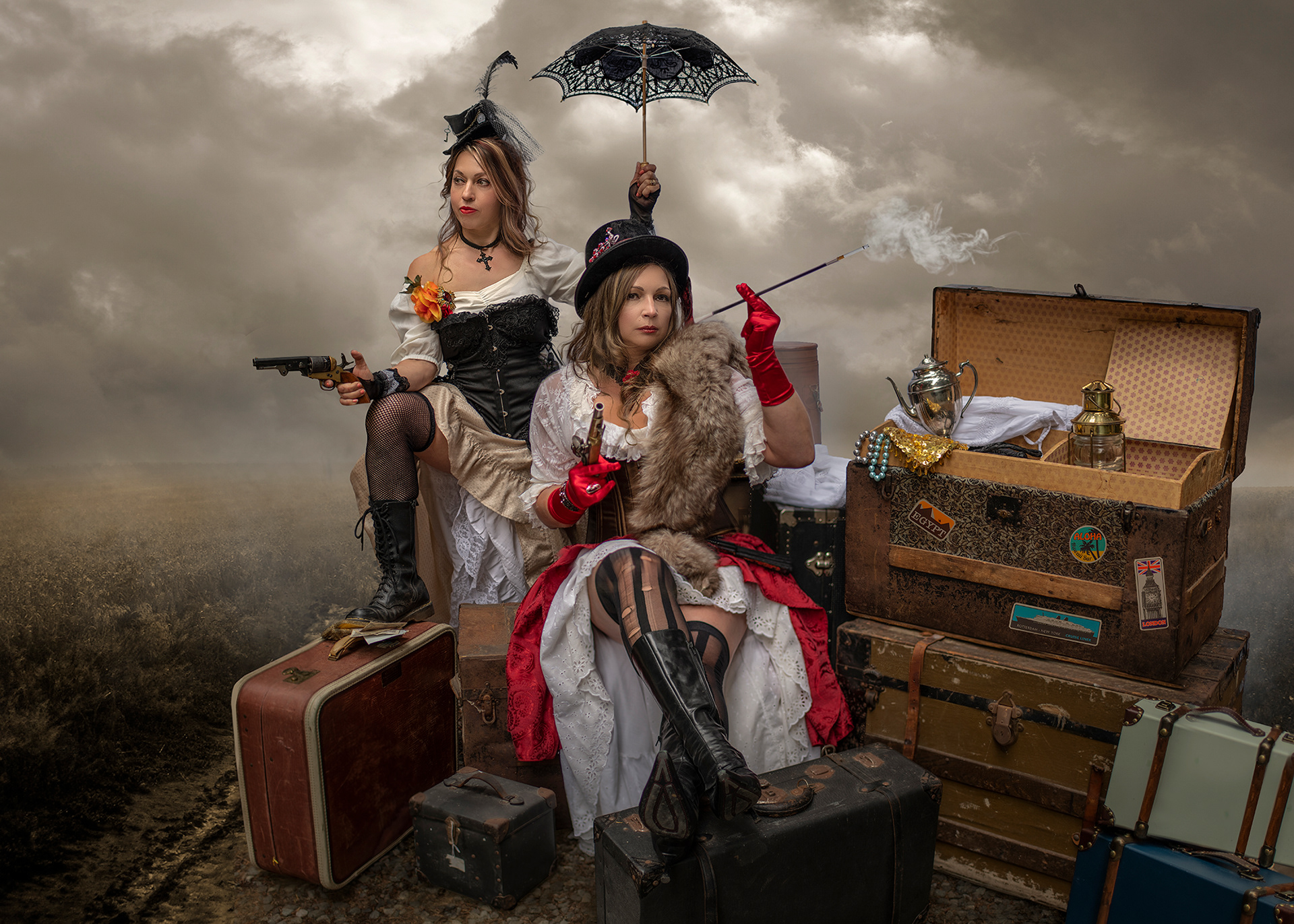
Girls Day Out
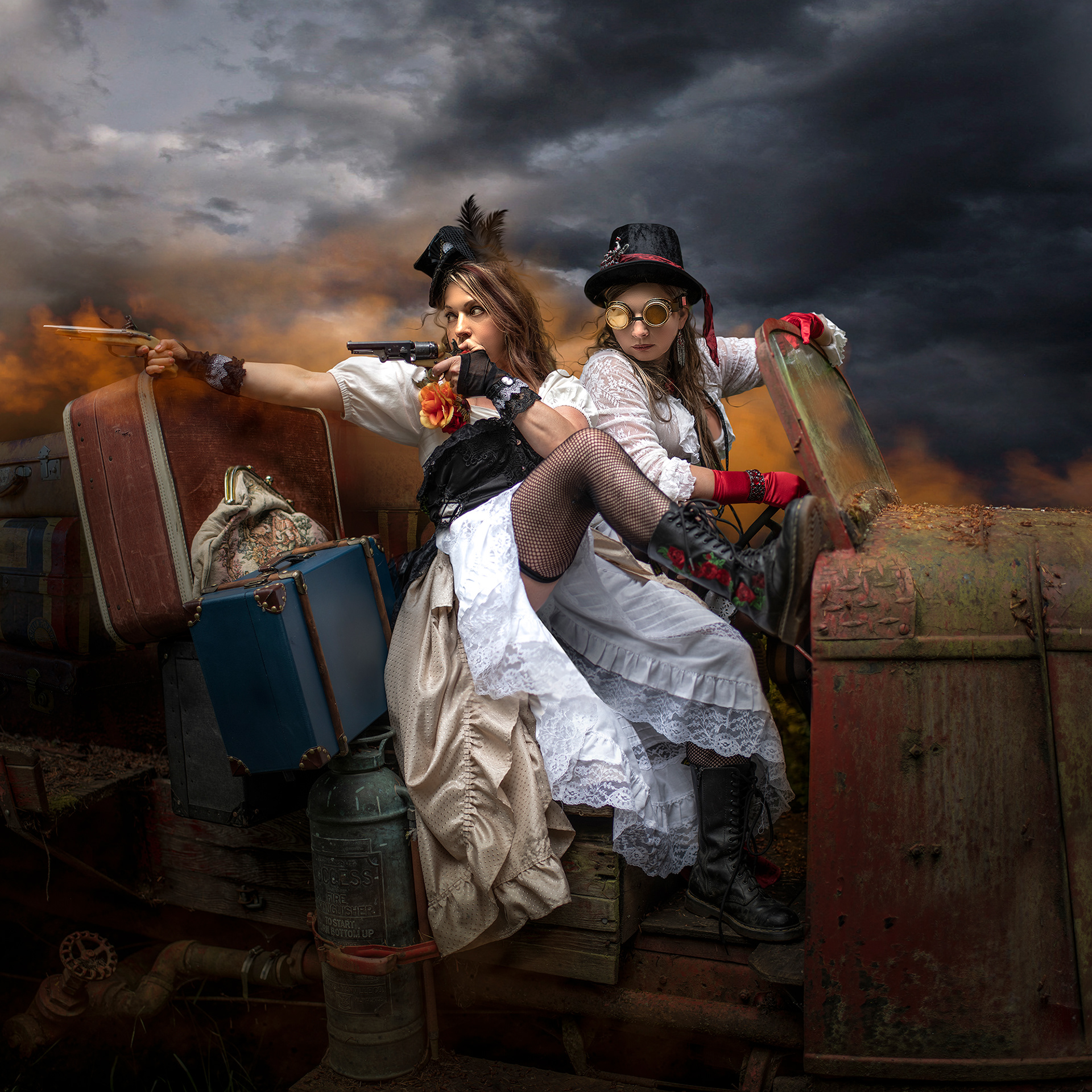
Girls Day Out
When it comes to Steampunk fantasy art, I like to believe that anything, and everything, is possible. I enjoy challenging myself with unusually complex concepts and intriguing scenarios. Digital photography can, and by my way of thinking, should create a story to explore. Images can seem to unfold right before your eyes, detailing action, drama and/or mystery. Details should include dynamic composition, background and costume detail, allegory and symbolism. Good characters belong to the space in which they are portrayed. It is important that every aspect of the photograph makes coherent, psychological sense to give the viewer a feeling of truth and reality. With the amazing advantage of digital processing comes the danger of producing an image that is confusing in detail, composition, and setting. Models should feel as though they "belong" to their settings. Convincing "space-time" elements in photography can add extra layers of dynamic depth and reality, enhancing the viewer's understanding and view-ability.
Travelers / Epic Hot Balloon Adventures
Typically, I start with the story. Having an inspired or creative idea and being able to express it in a way which can be experienced and understood are two very different abilities. Every detail of your image should unpack, unfold and propel the story. The more thought and effort you put into the setting and into your characters and costumes, the closer you will be able to approach that beautiful masterpiece you have in mind, yet be forever cognizant of the story you are attempting to illustrate.
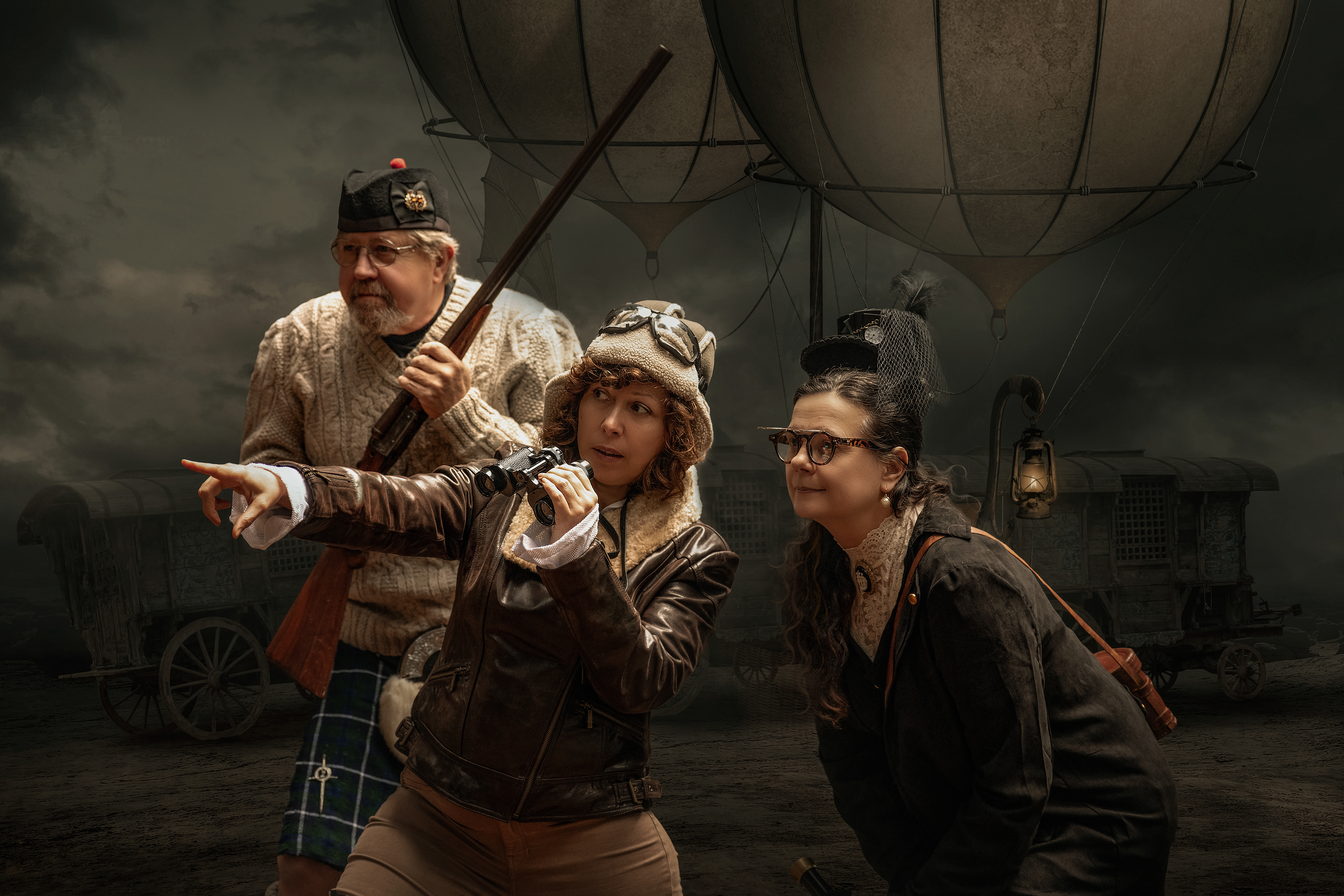
Epic Hot Balloon Adventures
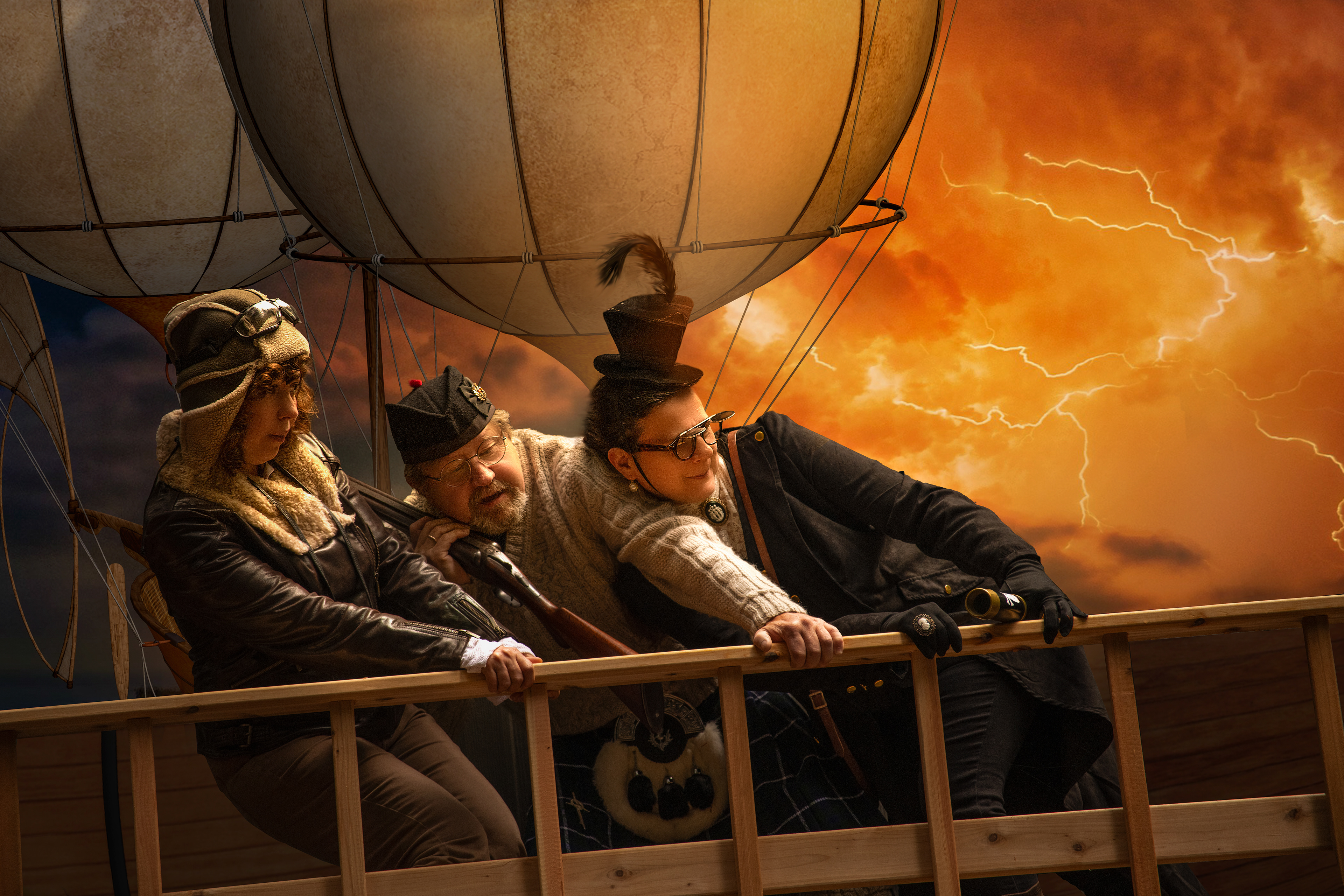
Epic Hot Balloon Adventures
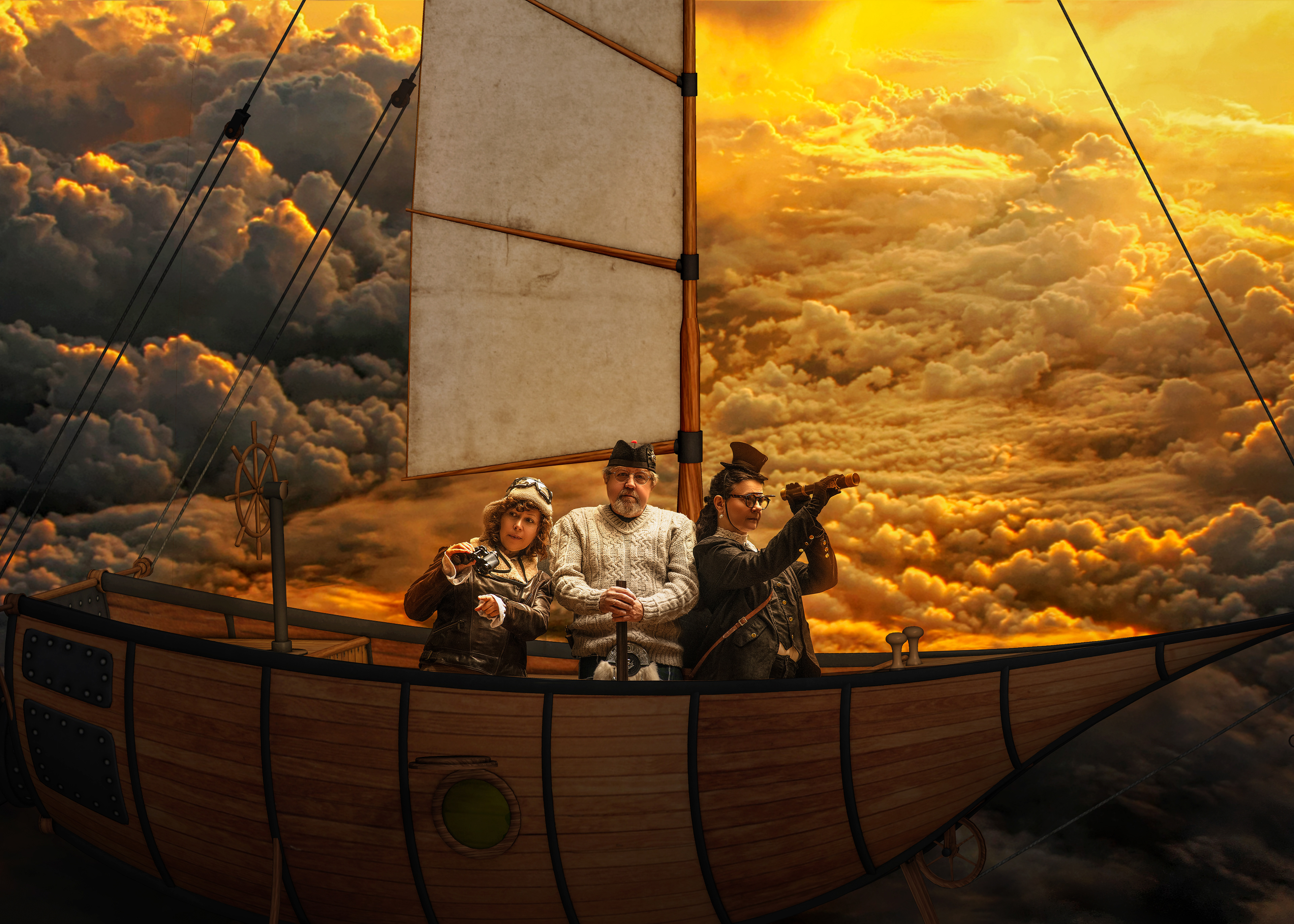
Epic Hot Balloon Adventures

Epic Hot Balloon Adventures
A fan of Jules Verne from a very early age, I found inspiration in his fantastical stories, and from that very early age, I have challenged myself to illustrate my favorites. And what says “Jules Verne” more than a hot air balloon ride? With that in mind, I contacted the Morning Star Balloon Co. in Sequim, Washington, who almost immediately sent me an invitation and permission to attend their next event. I shot more than 300 photographs, exploring every possible angle from the initial “unfolding” to the inevitable “takeoff.” Afterwards, while reviewing the shoot, I was bombarded with ideas, stories and scenarios. Post Production is when the fun really started happening!
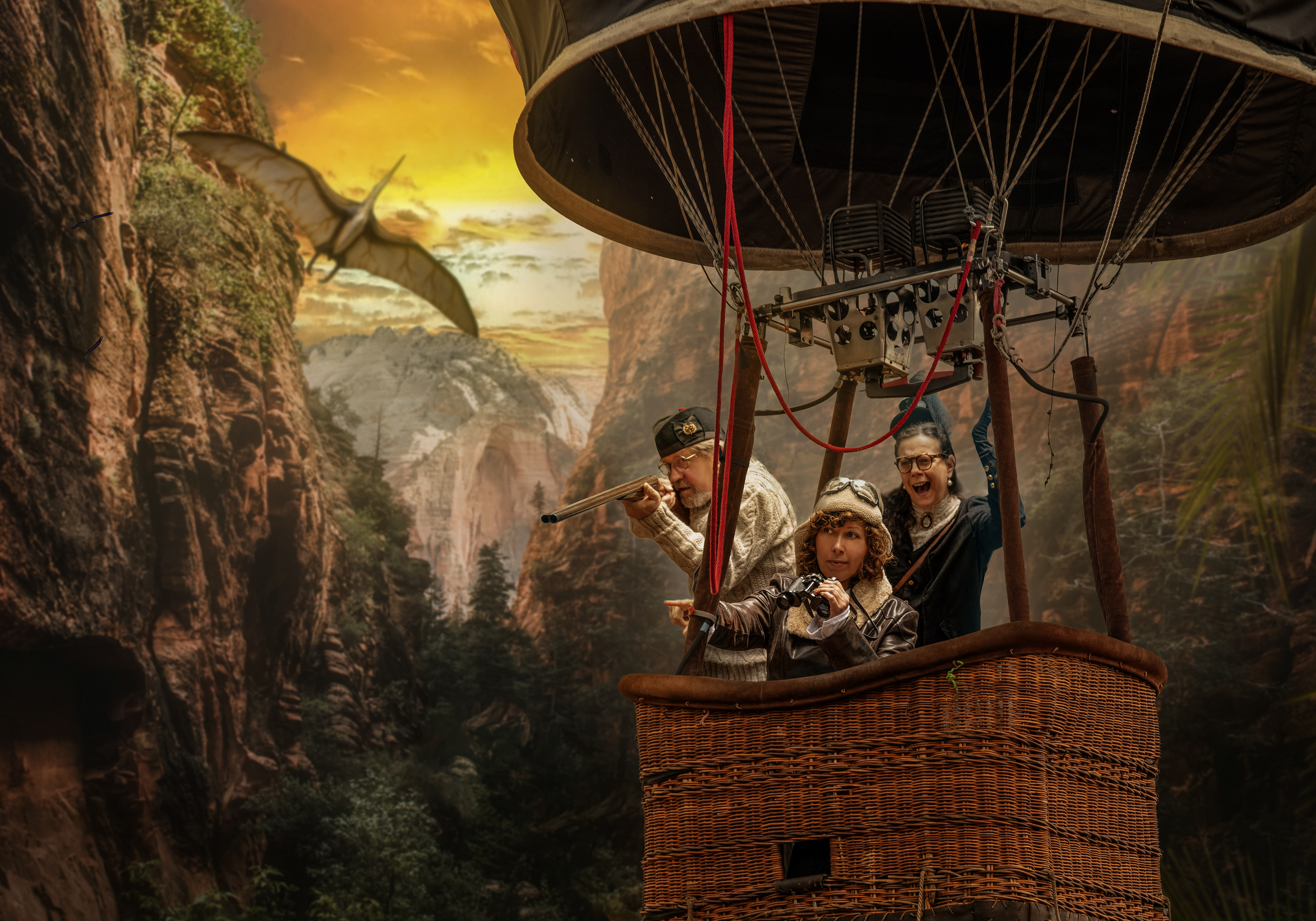
Epic Hot Balloon Adventures
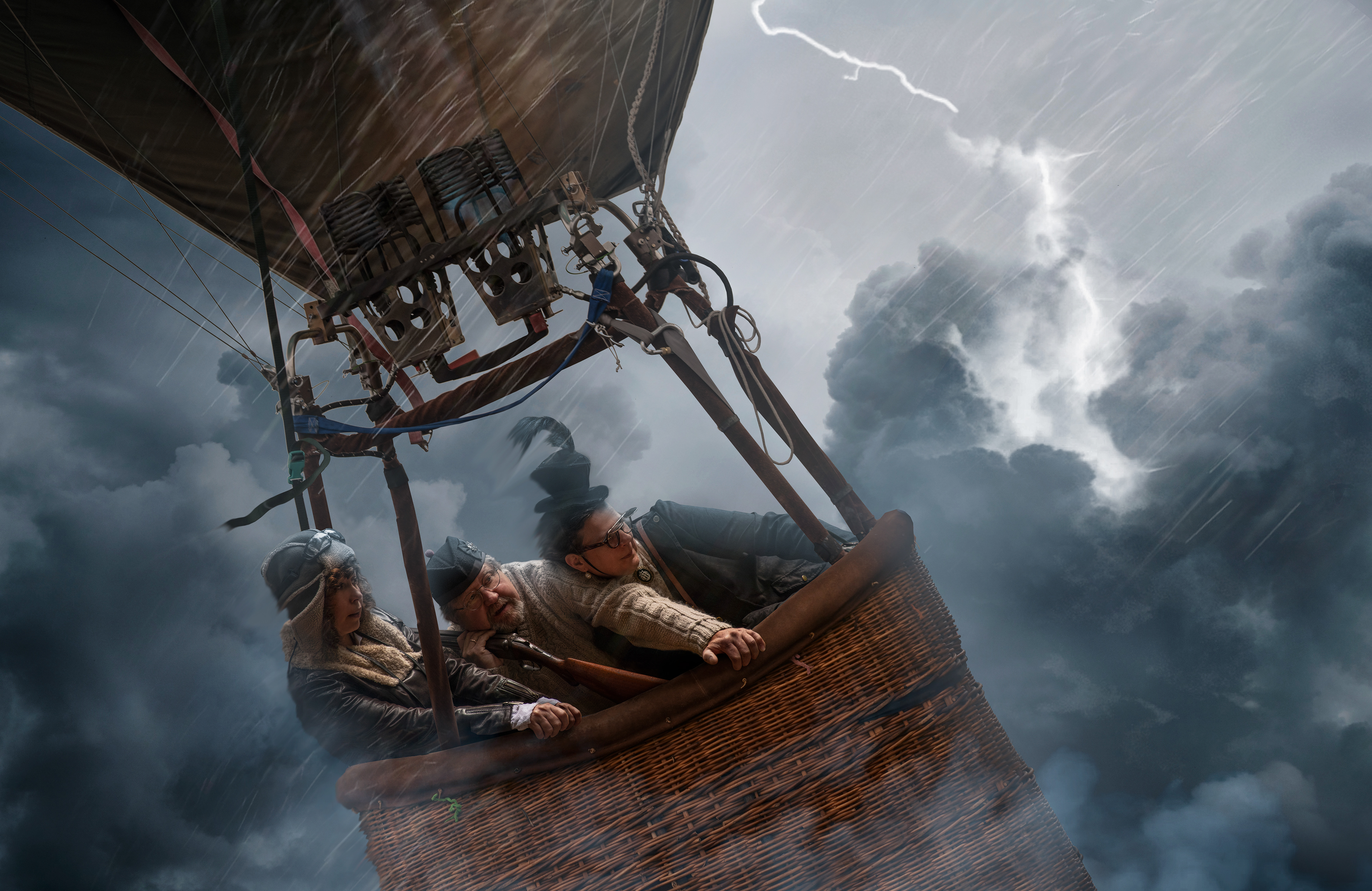
Epic Hot Balloon Adventures
When unable to discern an exciting, new idea, one can always depend upon the reiteration of an archetypal classic. Choose a story which on some level resonates with you. Mary Poppins, both story and character, have offered a plethora of material for me to unfold into so many different interpretations. All you need is a black umbrella, a mysterious suitcase, an adventurous model and a stormy sky. Always look for that unexpected and creative angle. I have had my wonderfully willing and agile model climb to the top of ladders, rooftops and any other place that gave me that perfect angle needed for Photoshop postproduction. Being physically “in the air” enables the model to “feel” the part, giving her a sense of flying, which in turn aids her performance.
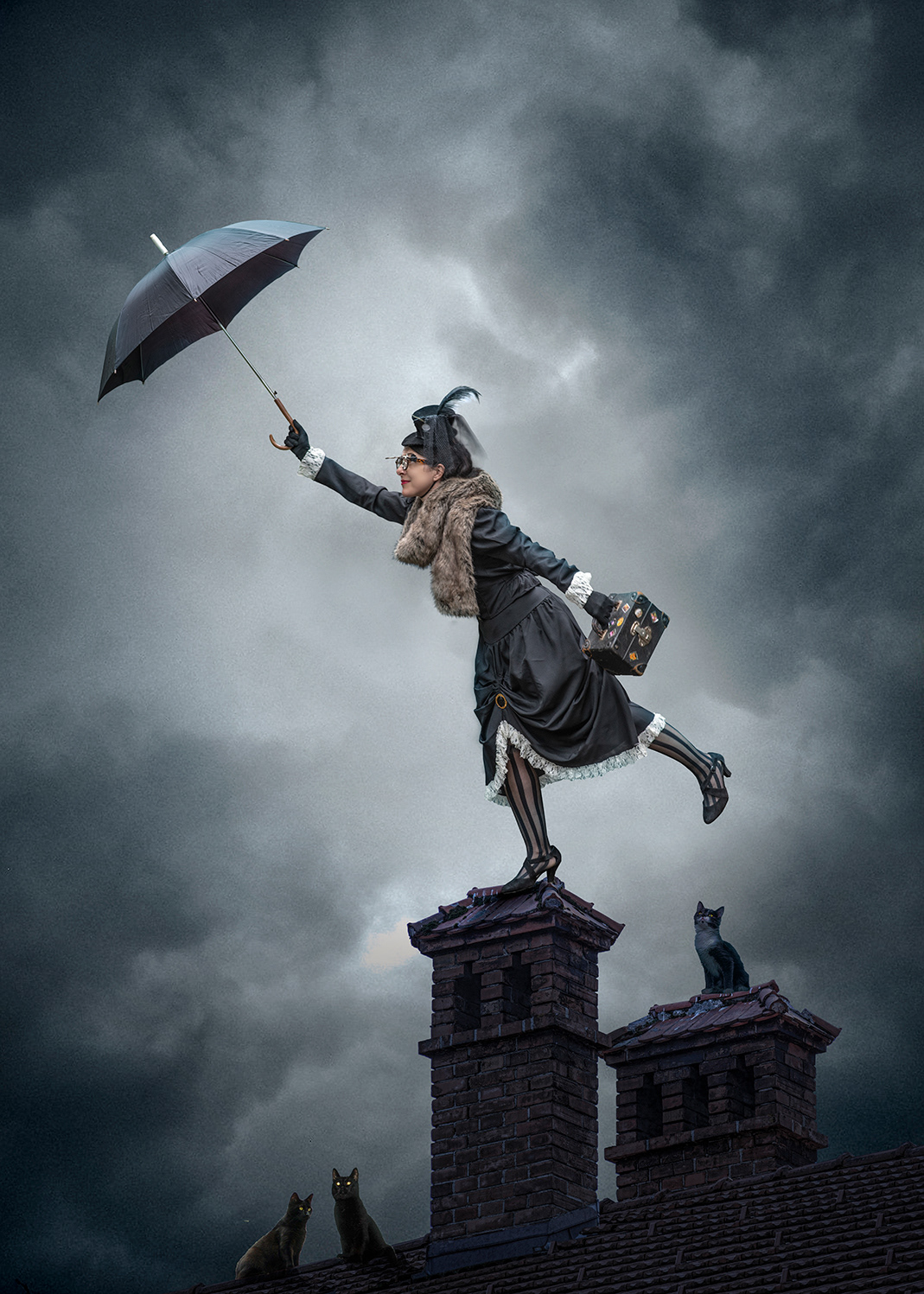
Practically Perfect in Every Way
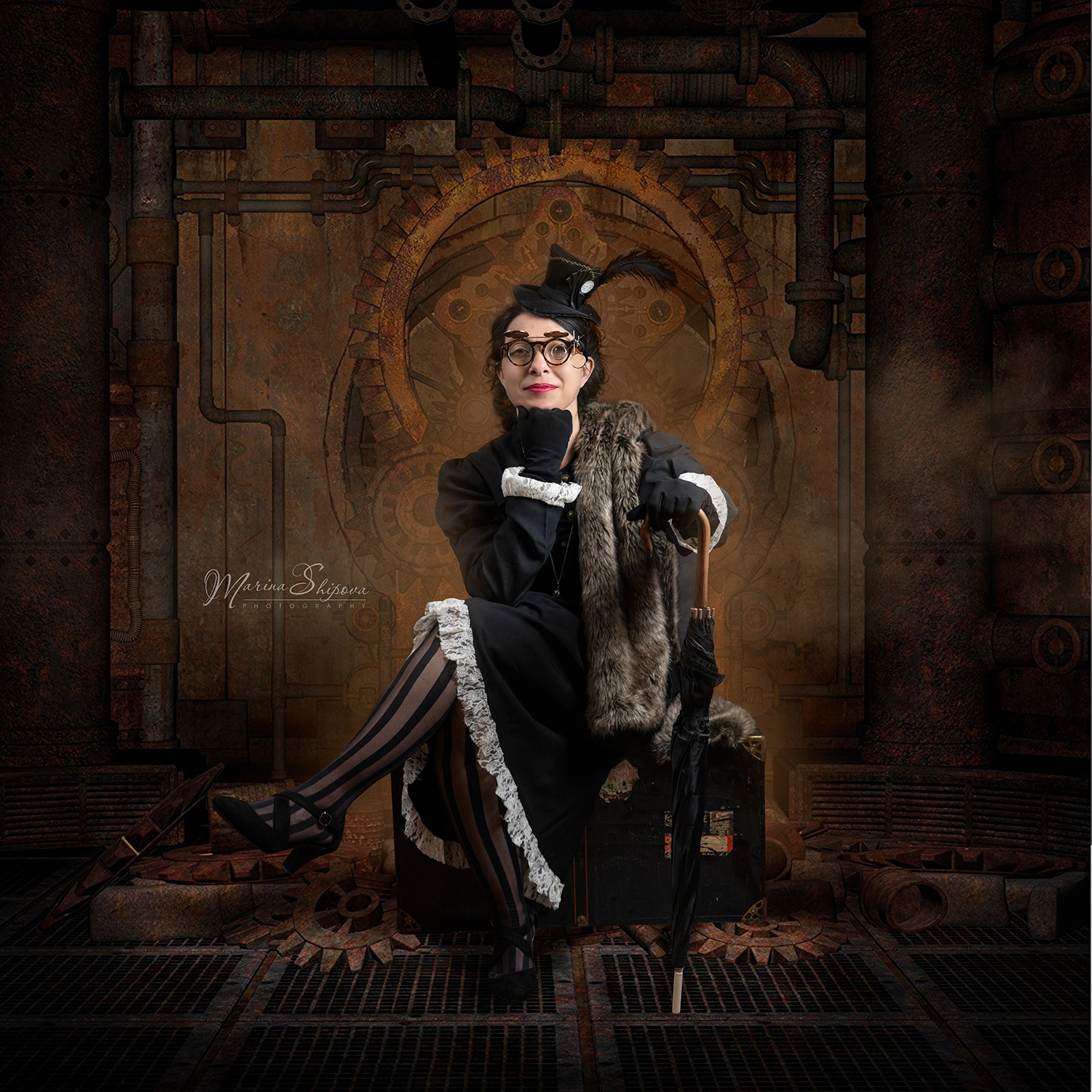
Practically Perfect in Every Way
Mood is extremely important when it comes to story building. The mood creates atmosphere and emotional impact. Your color choices play a very important role in defining the mood. Often our interpretation of color is very personal and can be very subjective; nonetheless, there is a general association which should be taken under consideration. Red is generally associated with drama, danger and passion. Green is associated with nature, and white with purity and innocence. Yellow is often associated with happiness and joy, black with sorrow and darkness, and blue with magic and mystery. Of course, you cannot always control the many colors on the set. The photographer has very little control of the colors the camera sees, such as the color of the sky or trees or the model’s flesh tones. Fortunately, Photoshop makes it incredibly easy to change color values and add overall tonal and color adjustments. However, it is prudent to plan and execute the photoshoot as much as possible prior to postproduction.
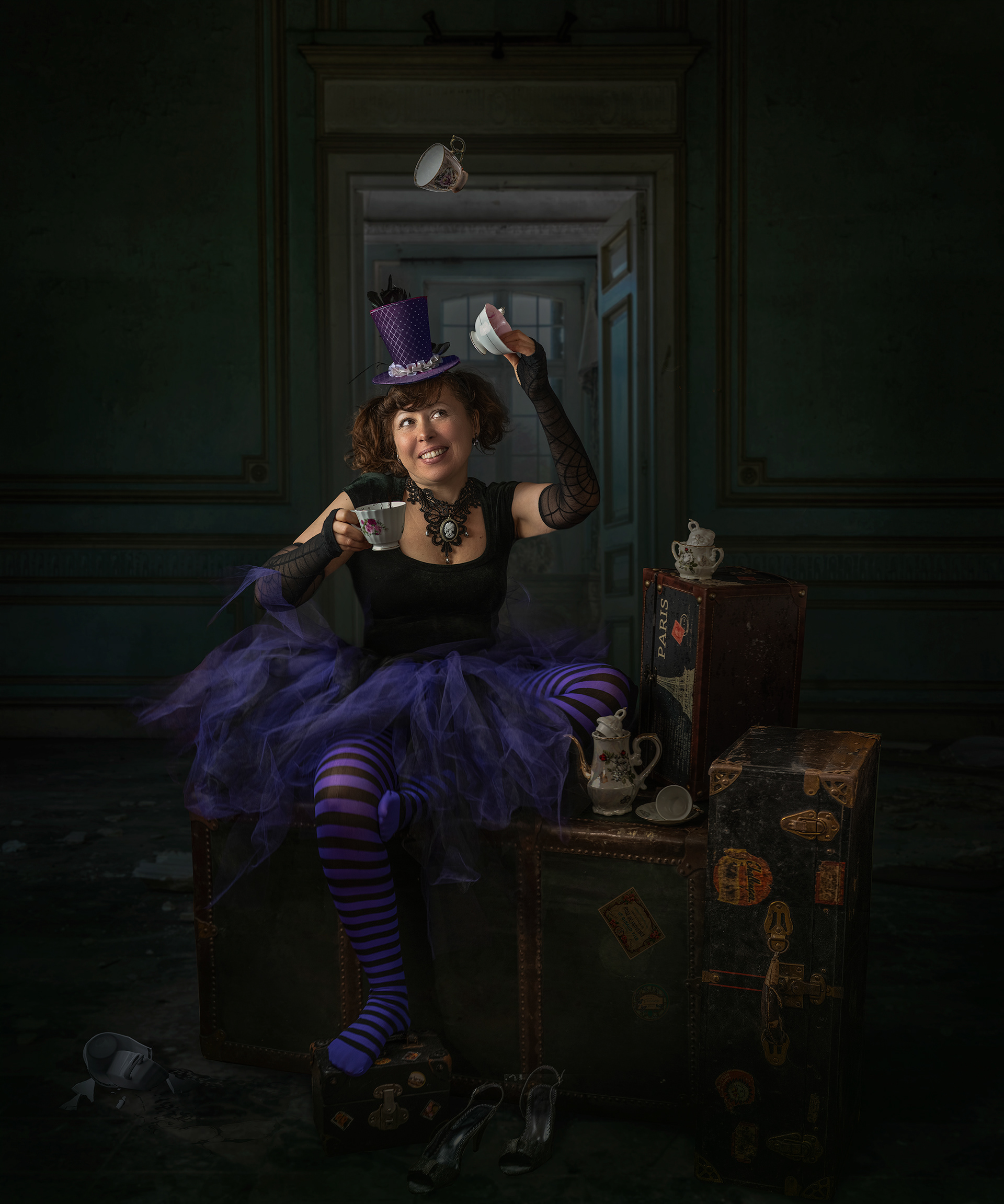
Unbalancing Act
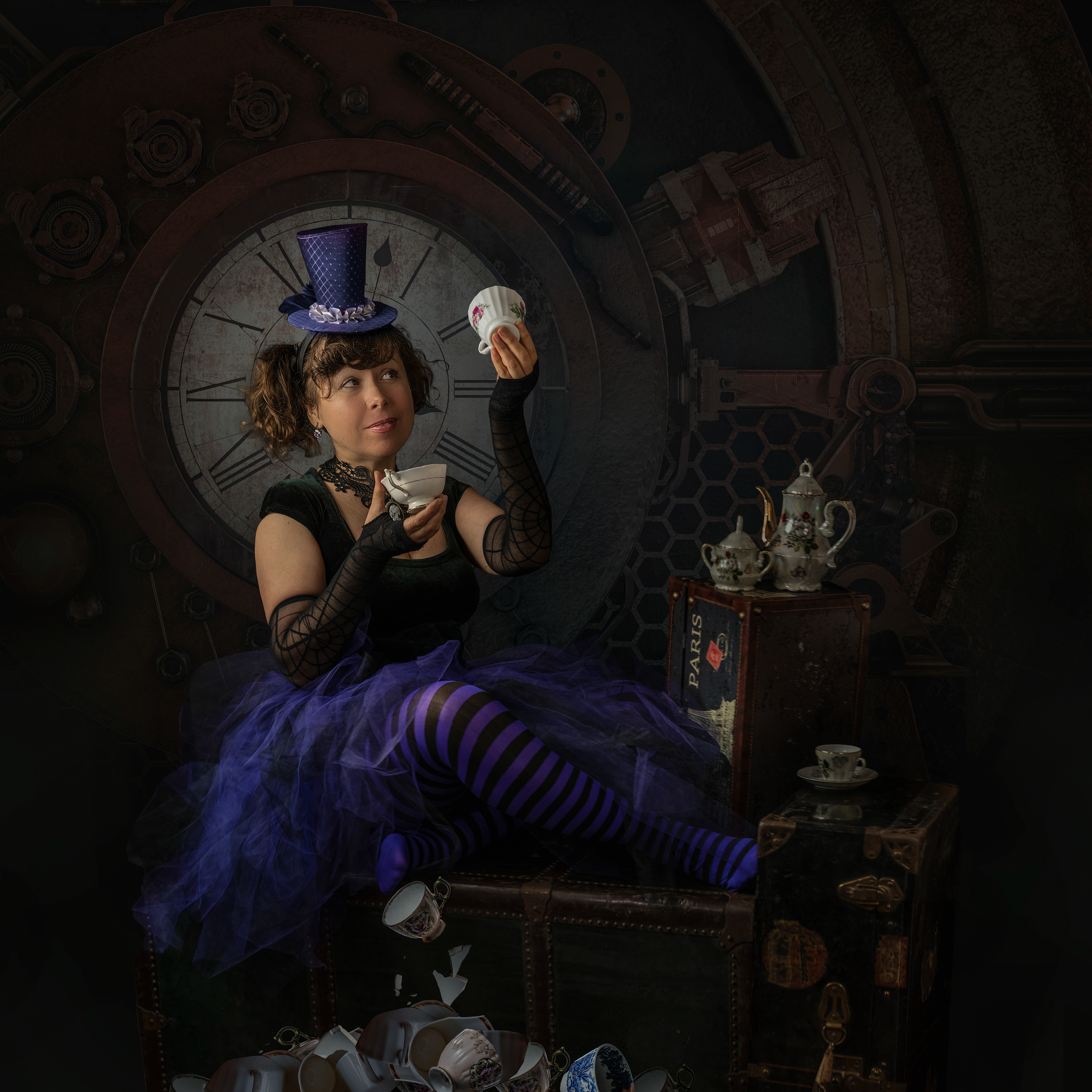
Unbalancing Act
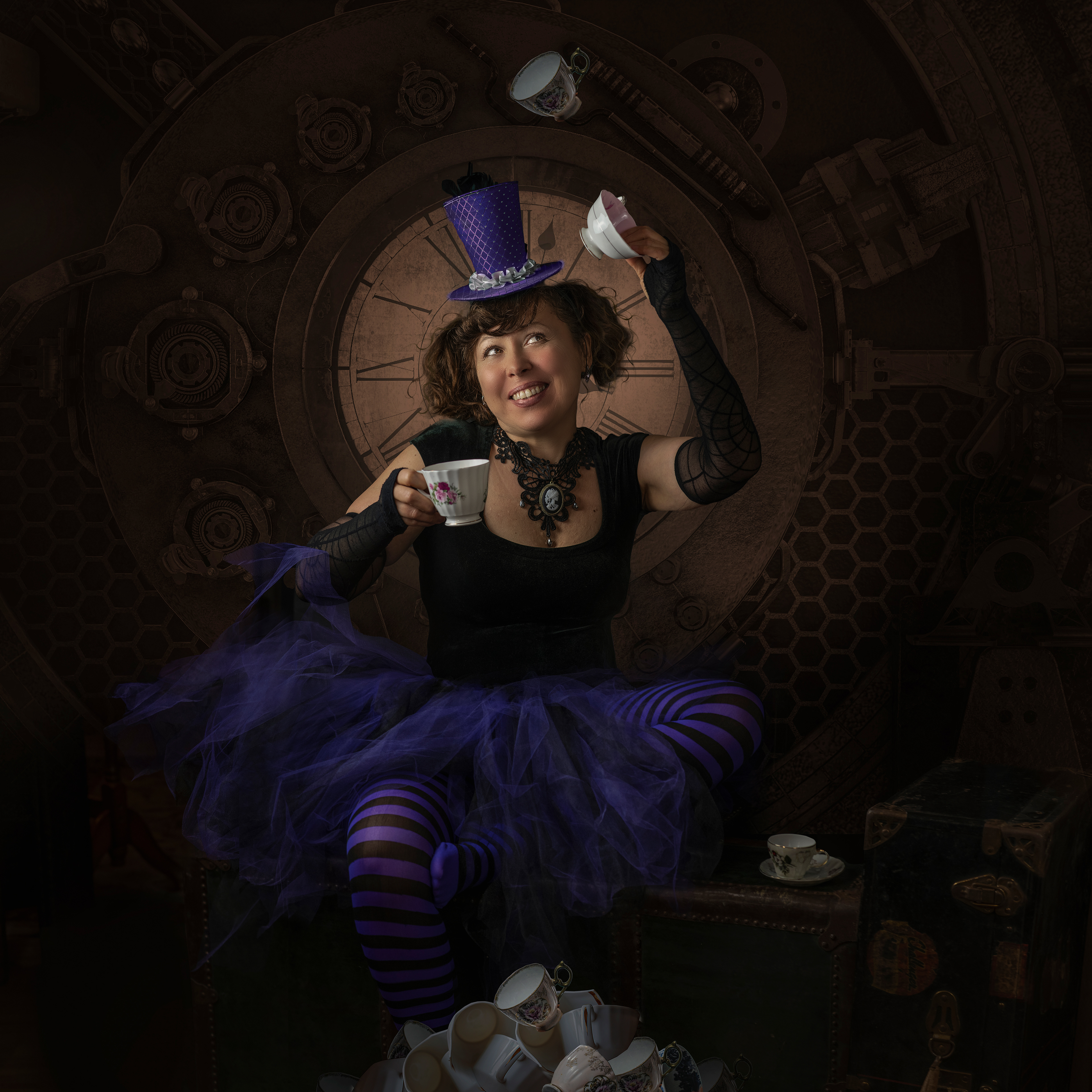
Unbalancing Act
Cold shades of blue are my colors of choice when creating mystery or suspense. Blues can also be used to create the night light effect, adding mystery or secrecy to a photo set. To emphasize (and differentiate from) the coldness and darkness, I will often add a complementary warm light source, which highlights and illuminates the model’s face, and at the same time creates long dramatic shadows while masking the background details. This allows me to bring forth the more important details of my intended story.

Train Rubbery
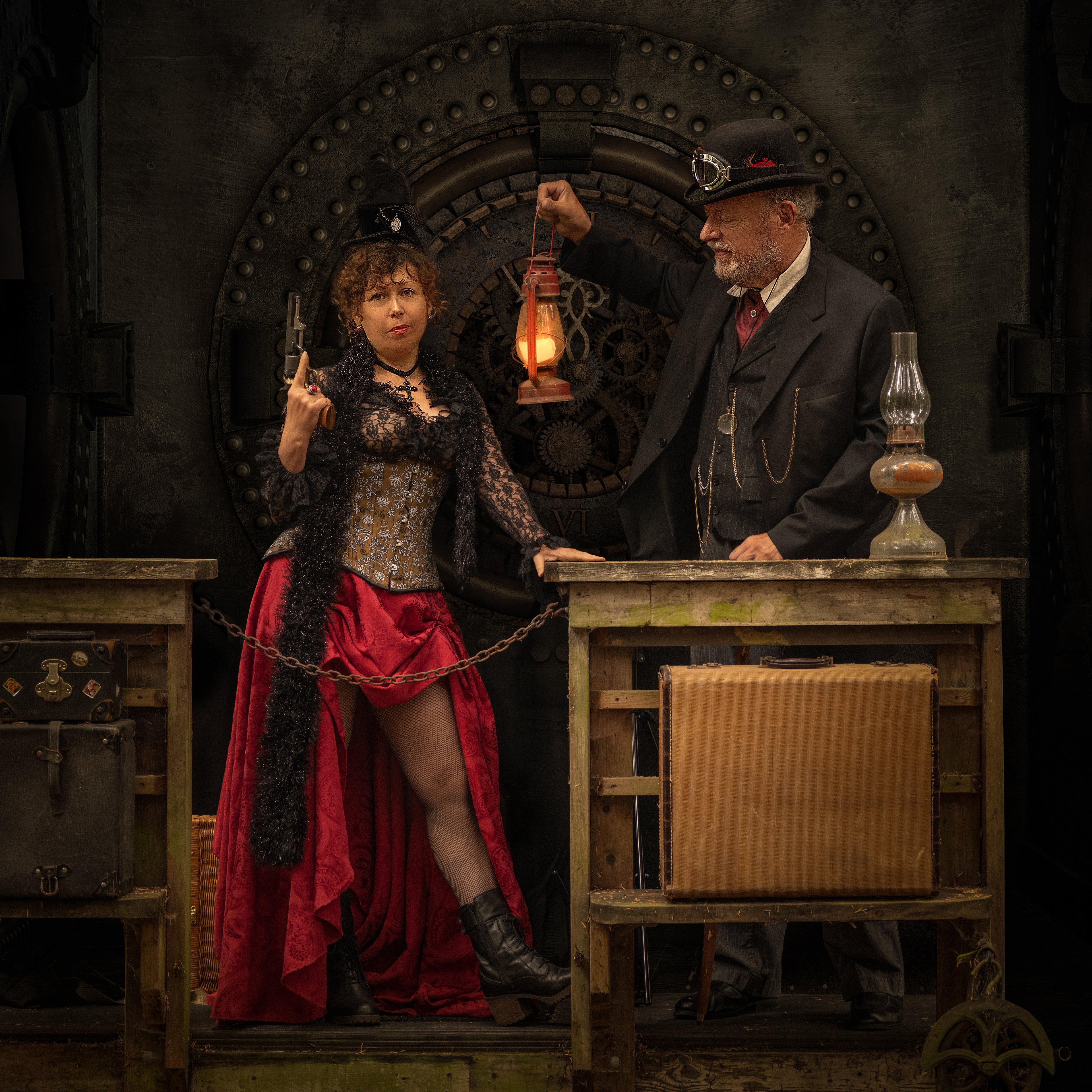
Train Rubbery
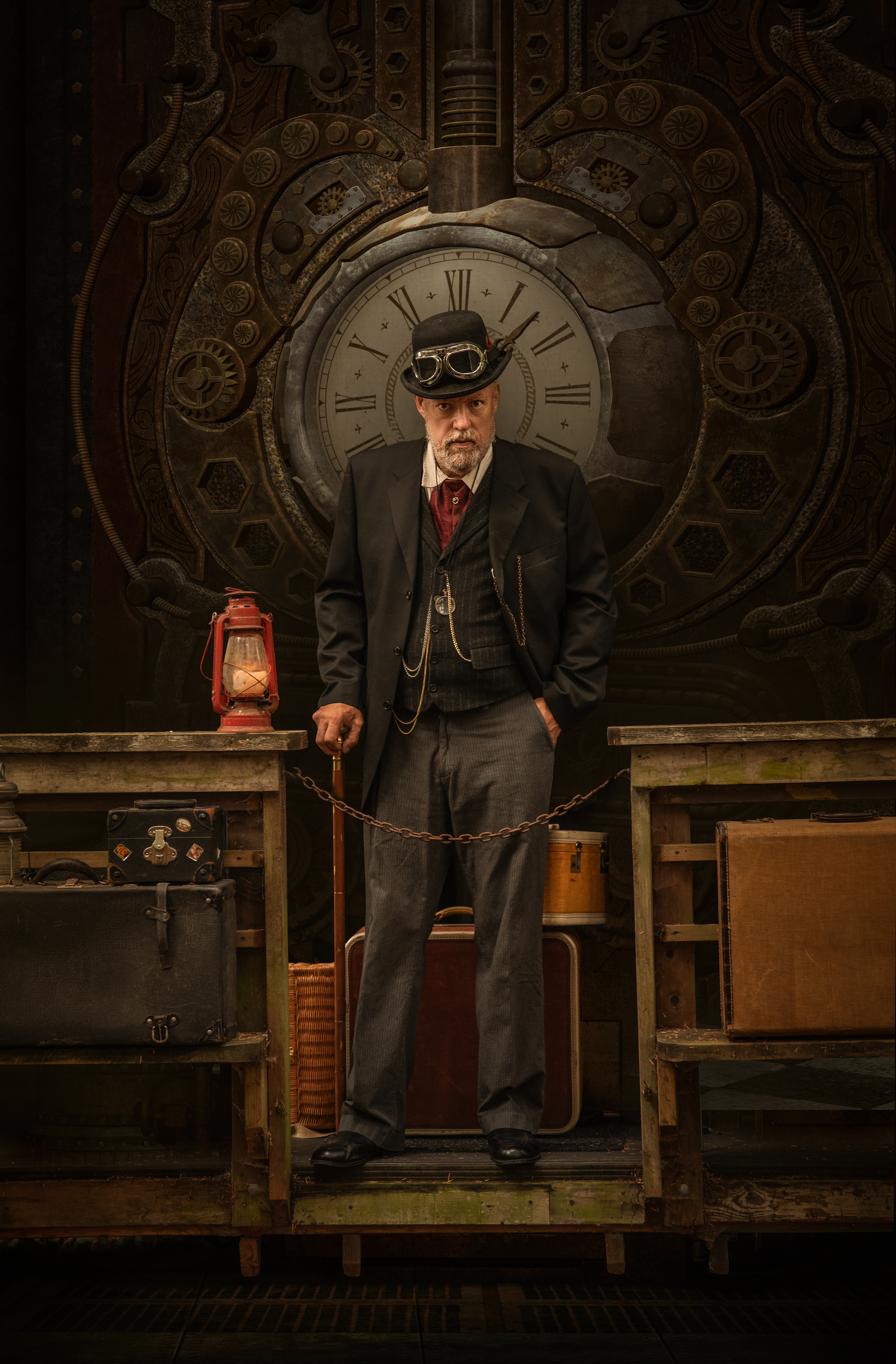
Train Rubbery
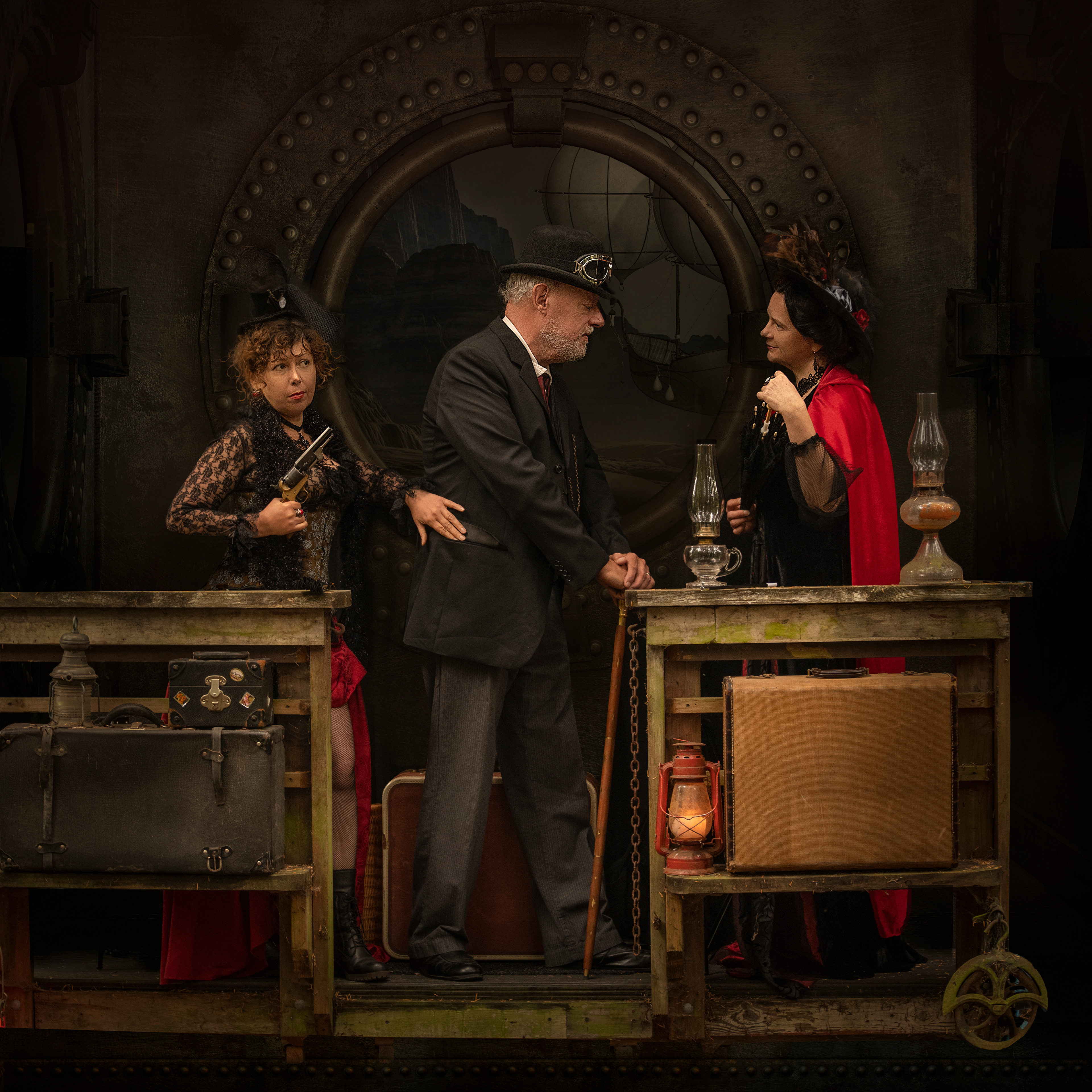
Train Rubbery
When it comes to creating time period composites, I lean toward brown or dark sepia tones. This color harmony creates a soft, warm timelessness effect yet still maintains a mysterious quality as in classic paintings. The combination of warm pink and beige can also generate a vintage effect but with a healthy touch of romantic temperament.
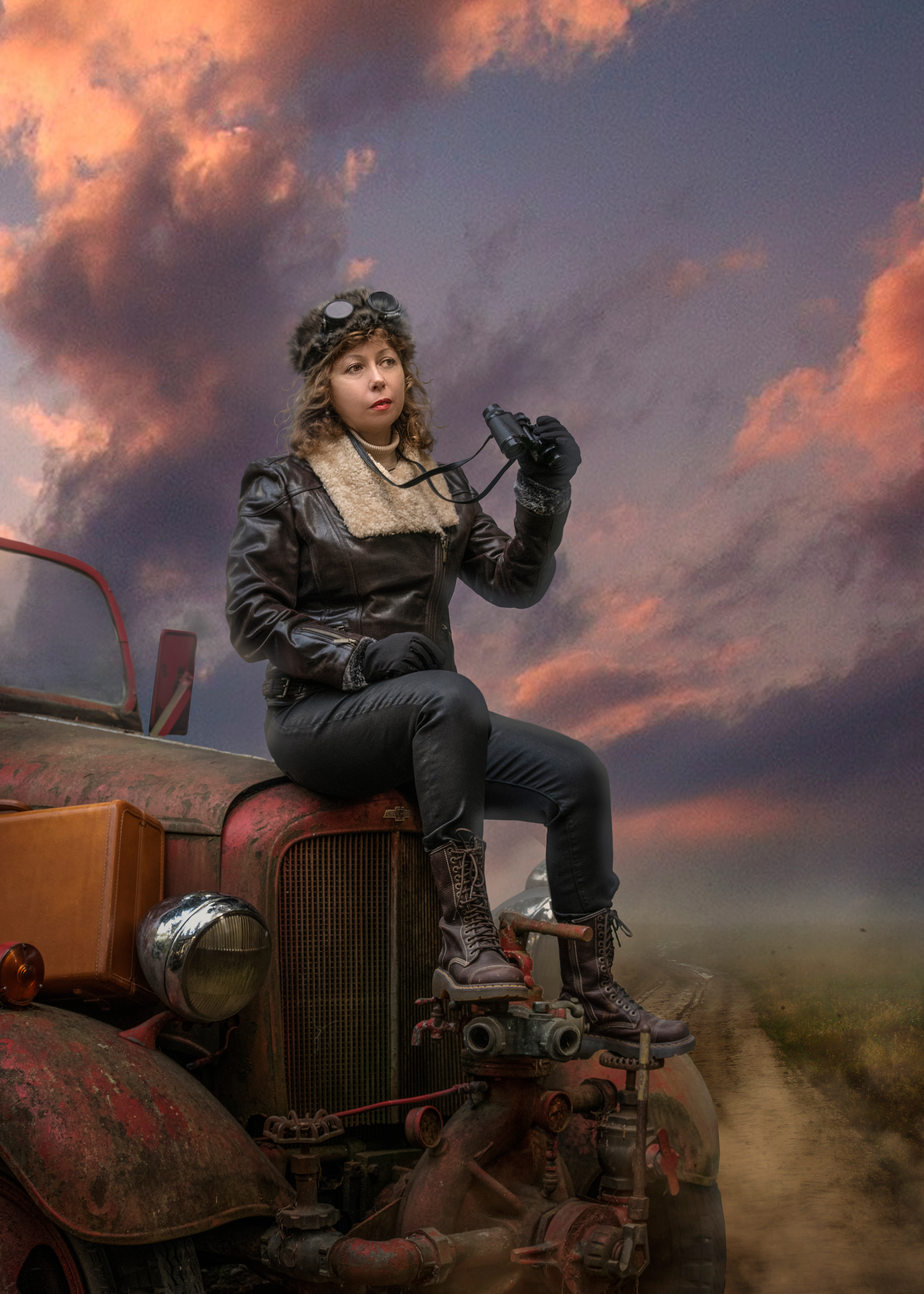
Ran Away
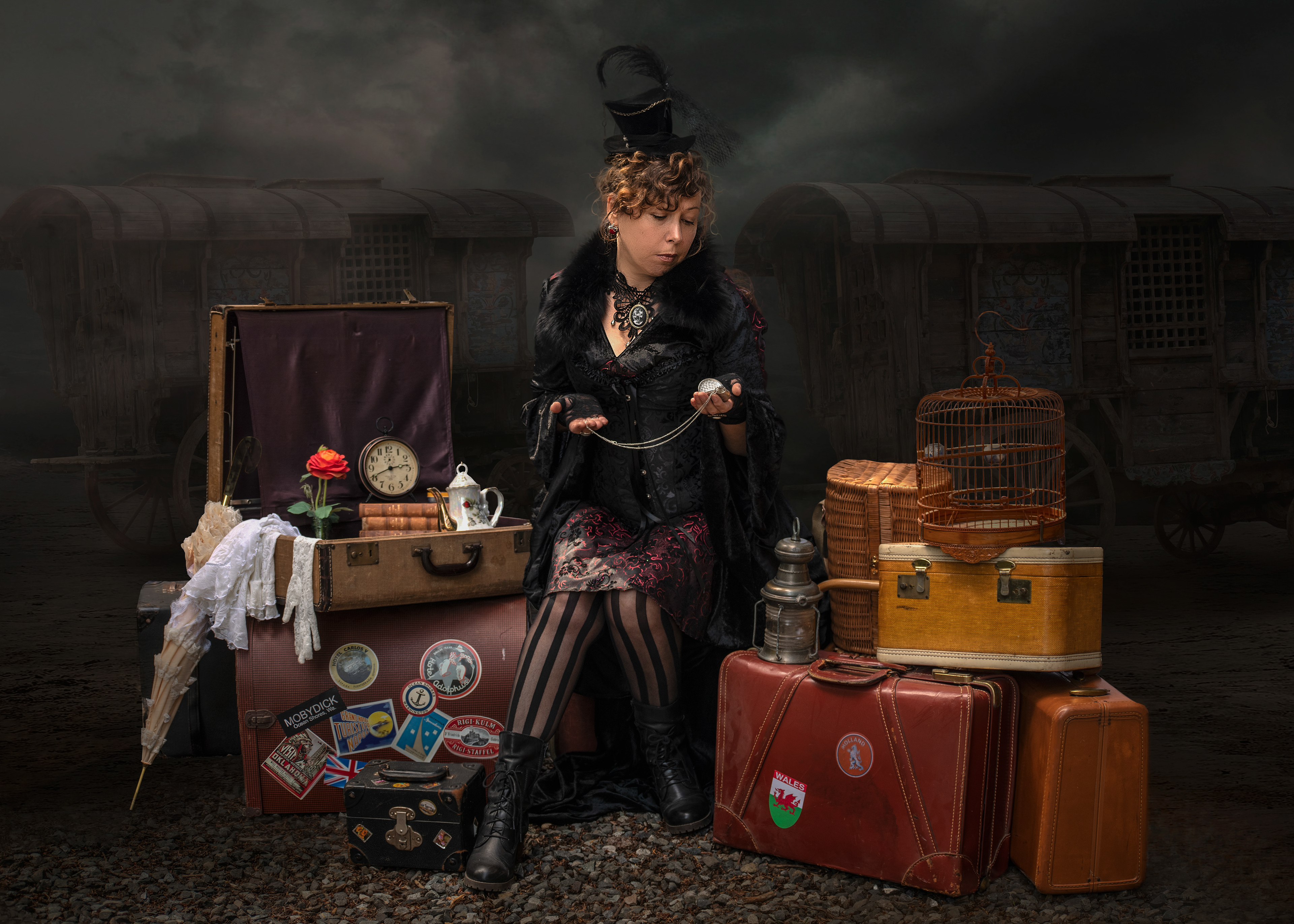
Ran Away
Ideally, you want to photograph in the most exciting and/or interesting locations. I absolutely love period architecture, vintage cars and trains, ancient ruins and castles. Practicality does not always provide such great choices, so you must learn to trust your imagination and find the “extraordinary” in everyday objects and places. The photos below were created in my backyard with friends, a fog machine and an old FJ40 Land Cruiser (which was missing its engine at the time of the shoot). Photography can create great illusions! Find the right angle and the right light and then create any atmosphere you desire.
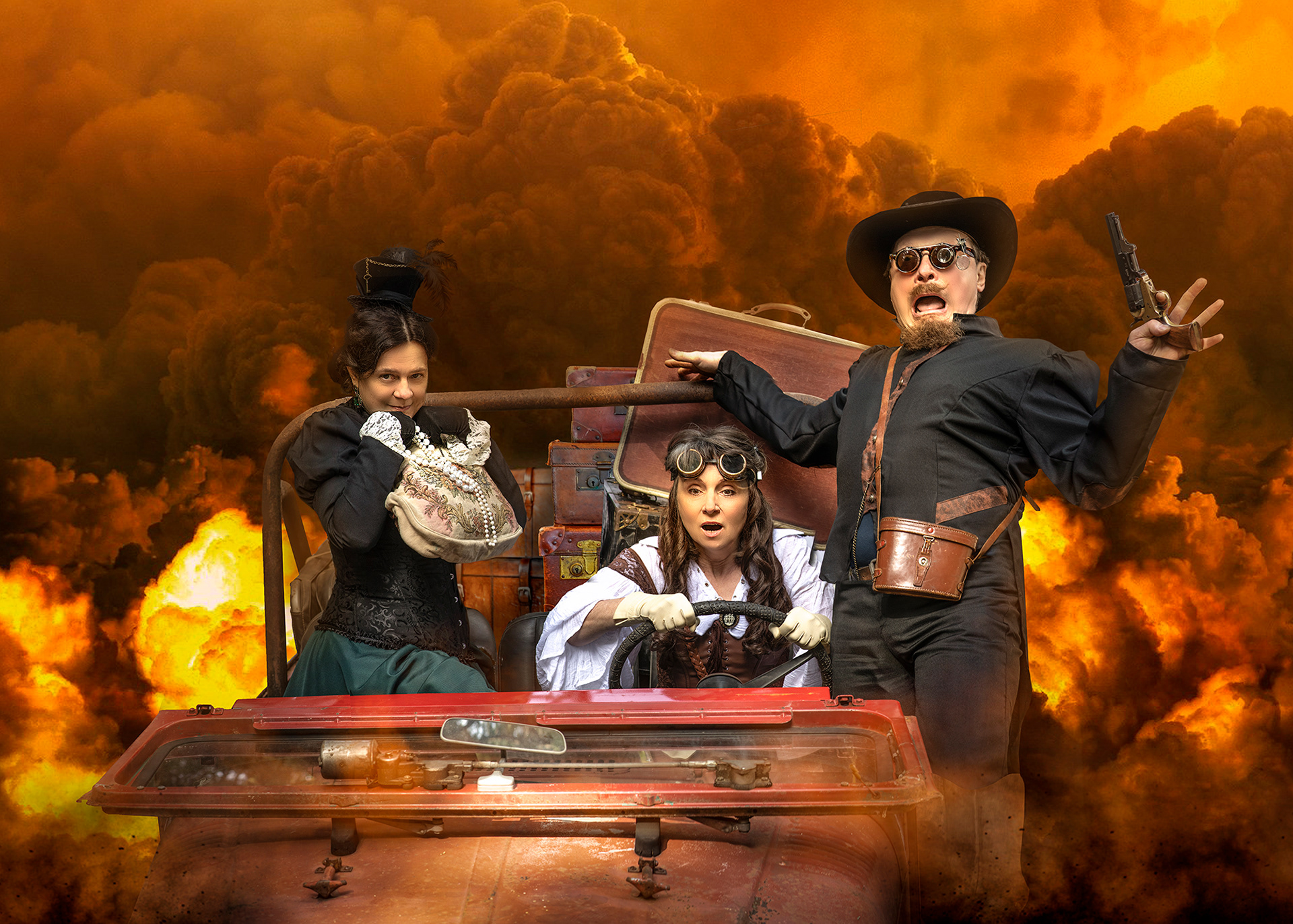
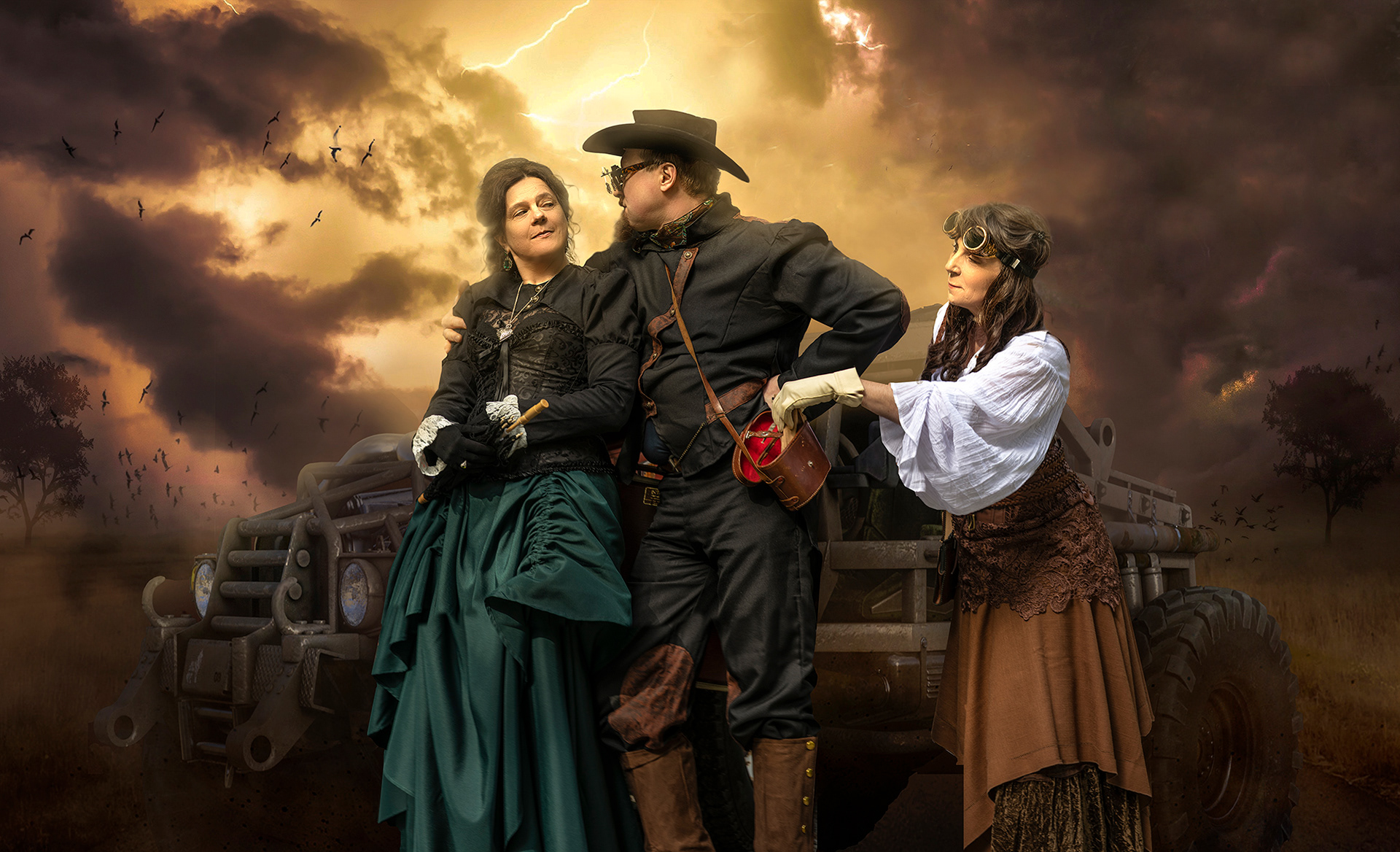
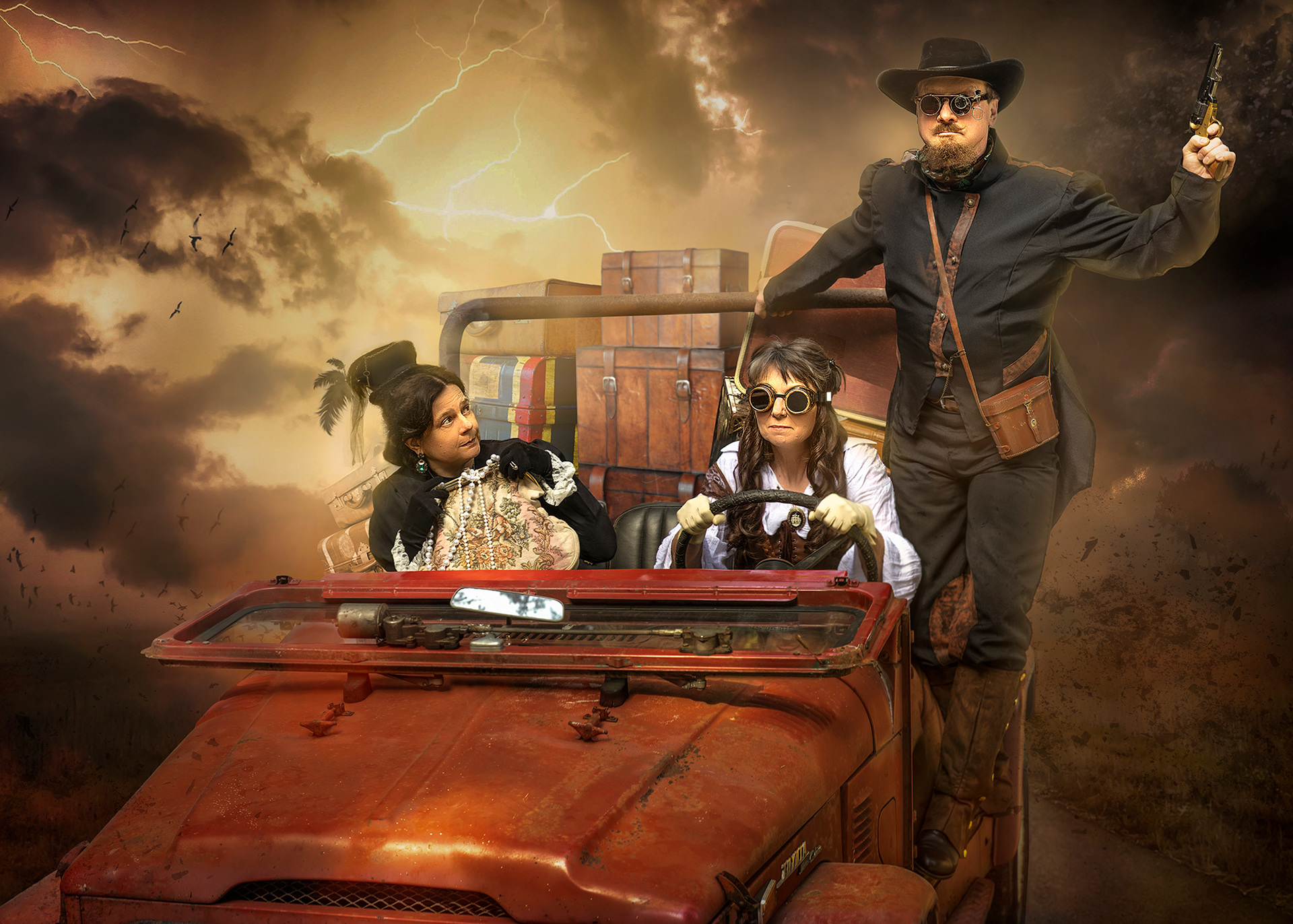
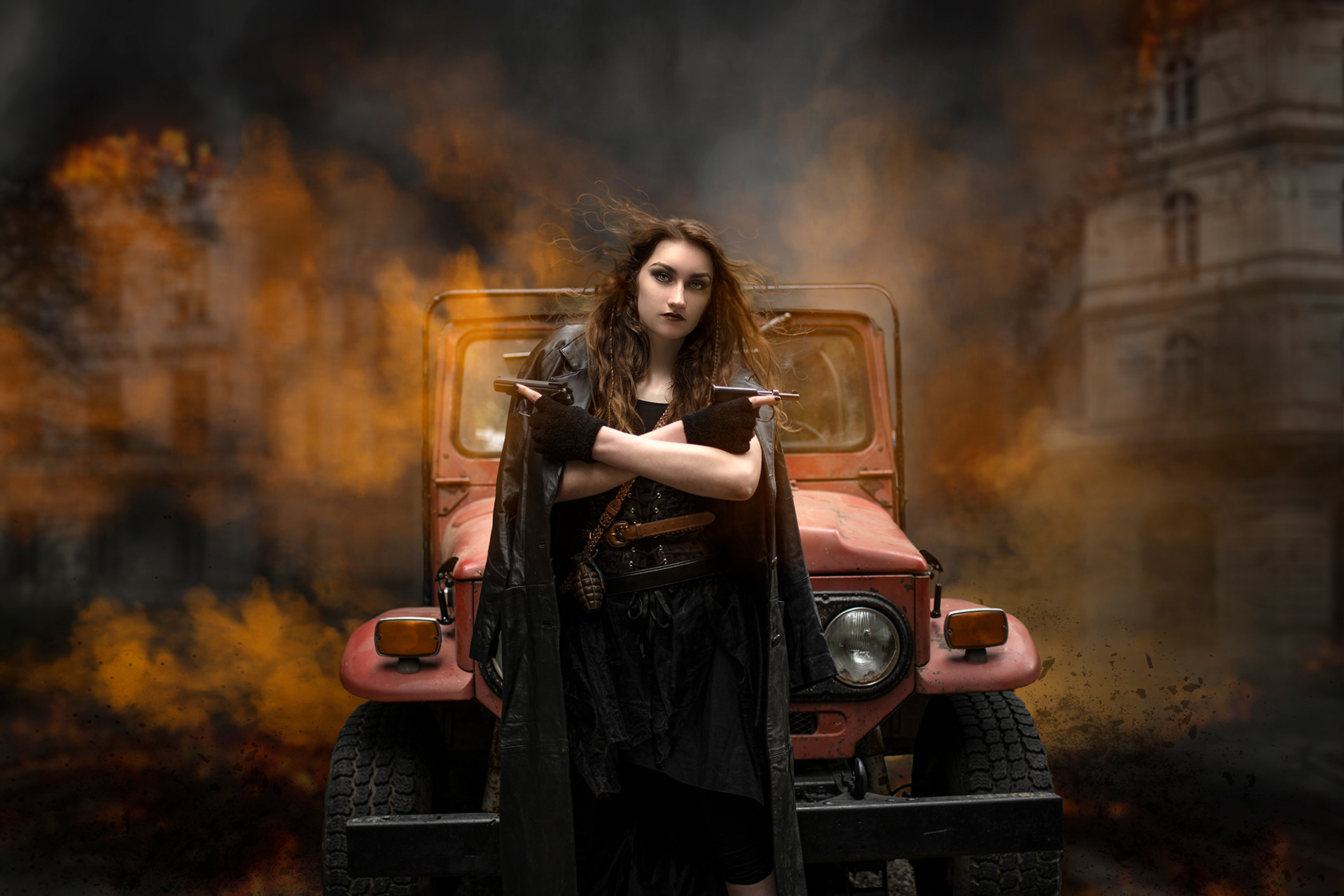
Across the Wild
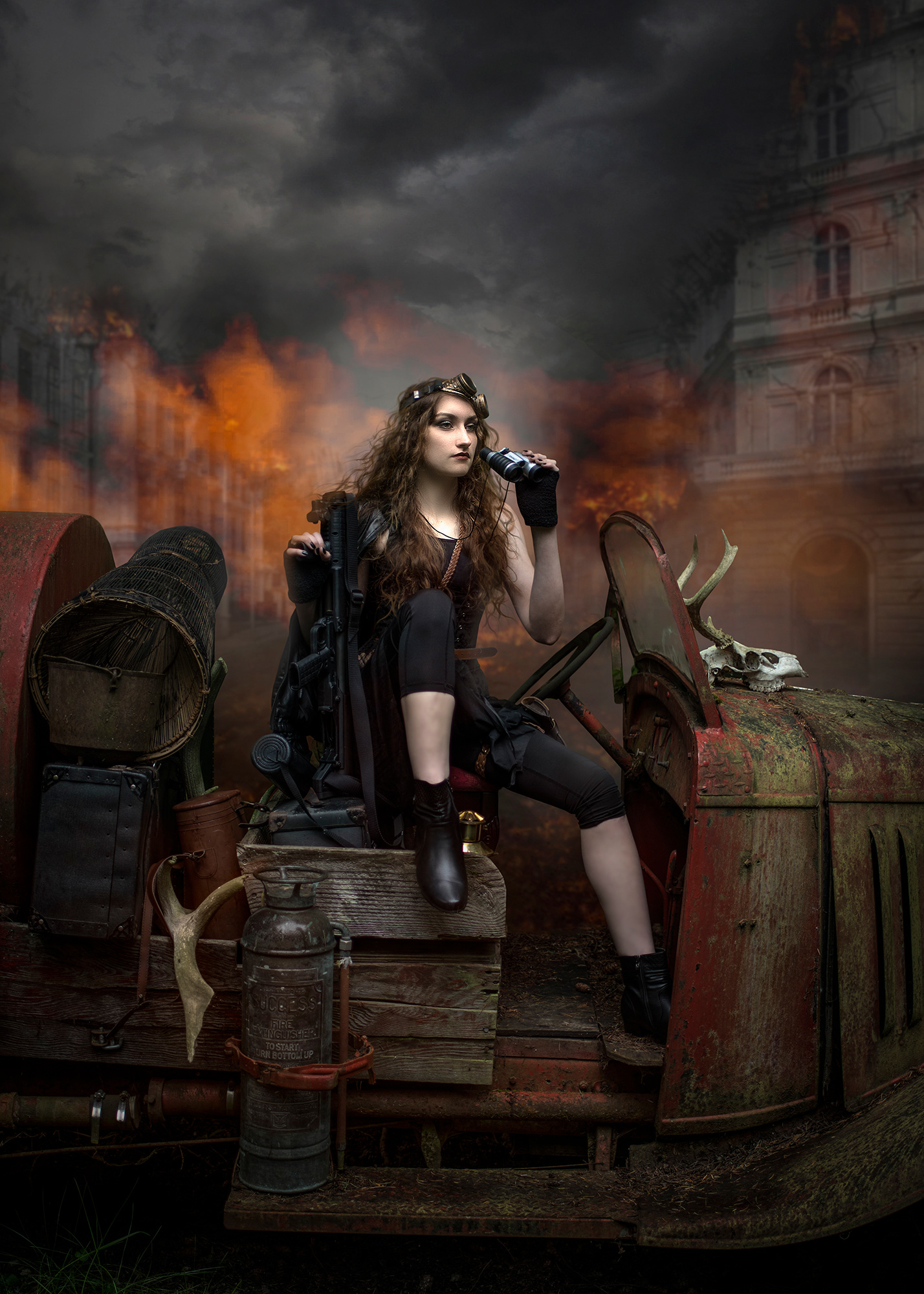
Across the Wild
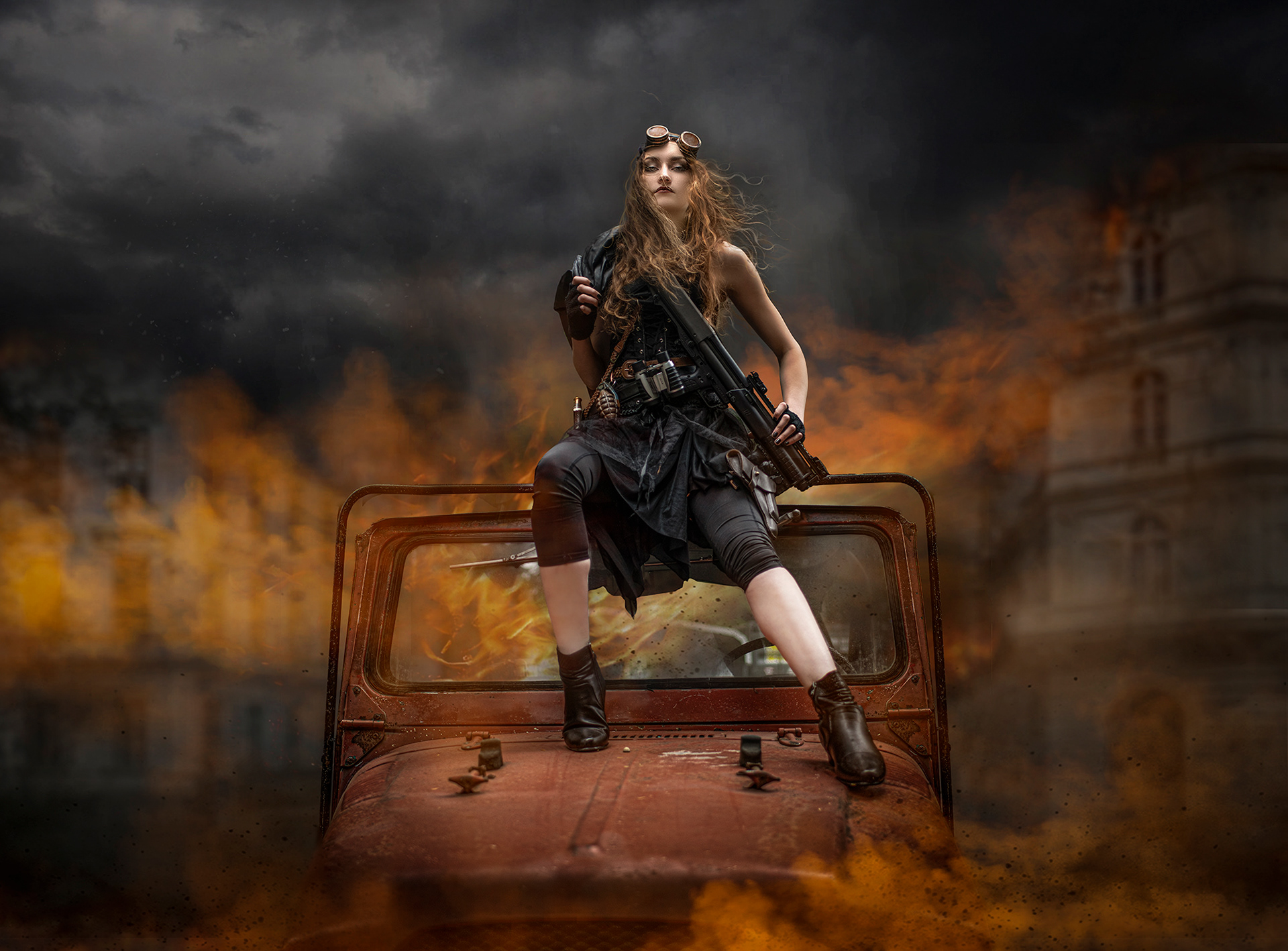
Personally, I’m having way too much fun with my obsession, evidenced by a series of photoshoots with my friends as models willing to play dress-up and adopt the characters of travelers, mad scientists, and outlaw bandits. And as much as I enjoy these shoots for themselves, the real appeal for me is in manipulating the photographs in Photoshop to look like they’re Steampunk themselves: timeless, dystopian, weird, derivative and wonderful.
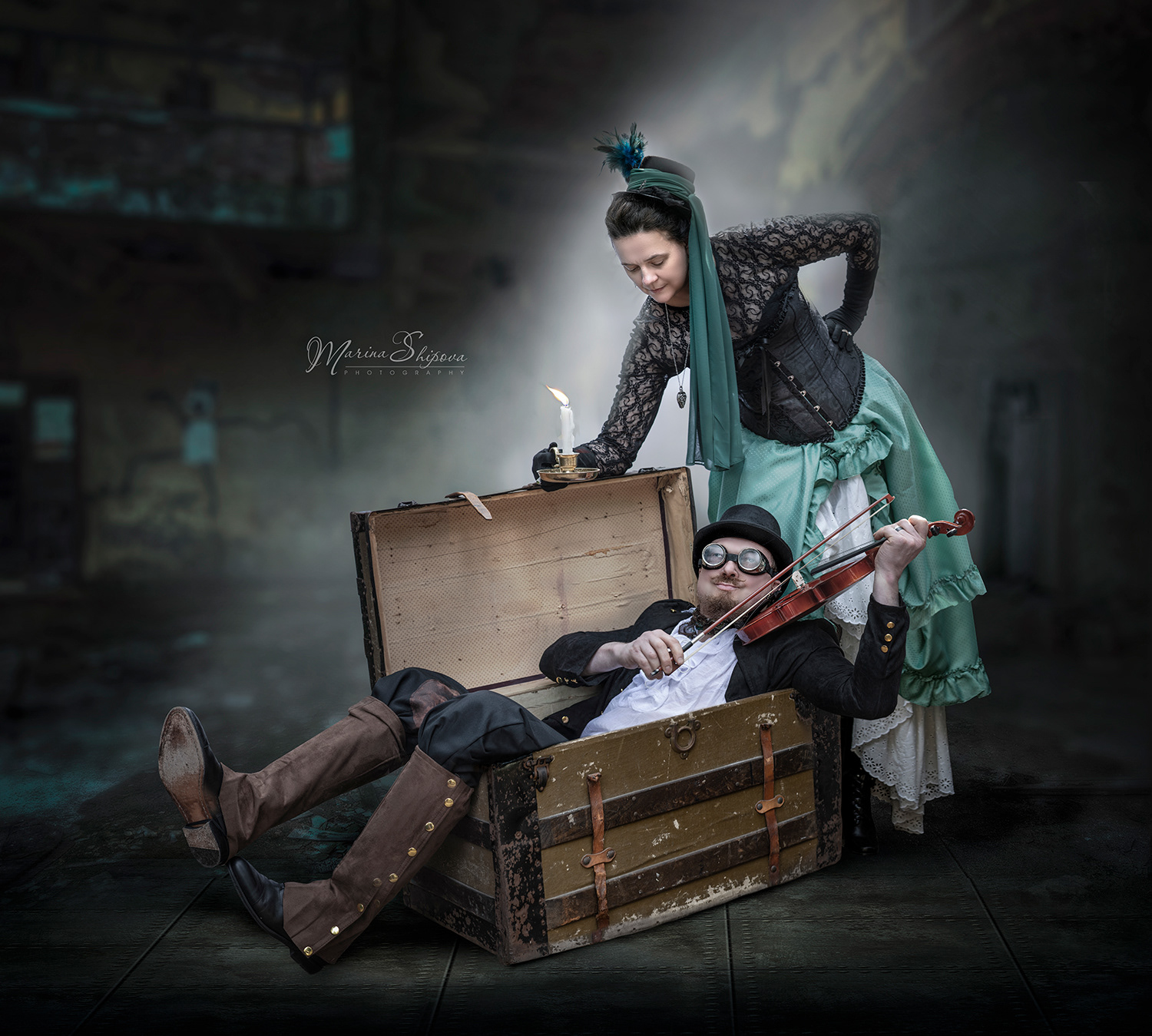
A Fable of a Journey Through North America
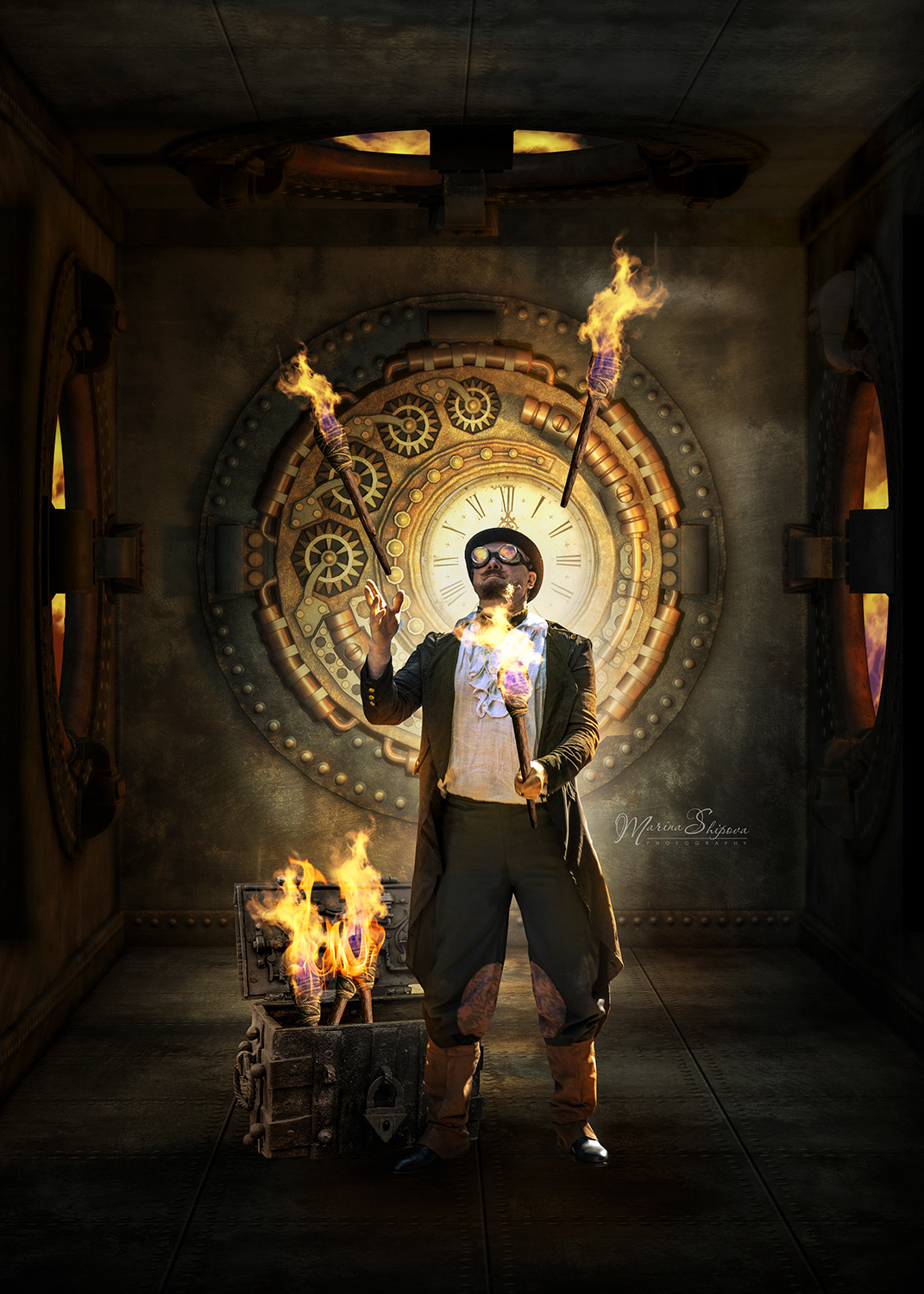
A Fable of a Journey Through North America
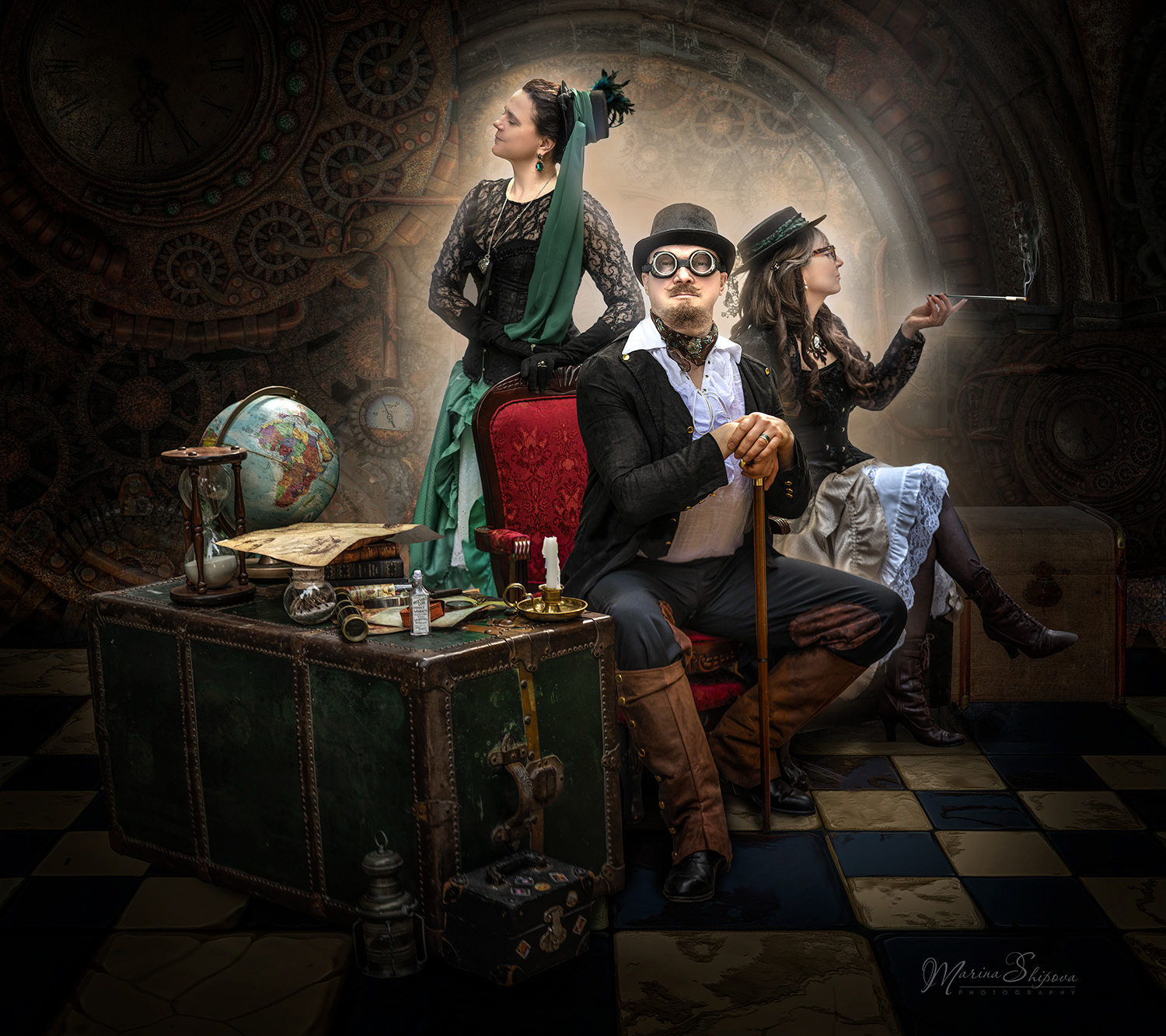
A Fable of a Journey Through North America
